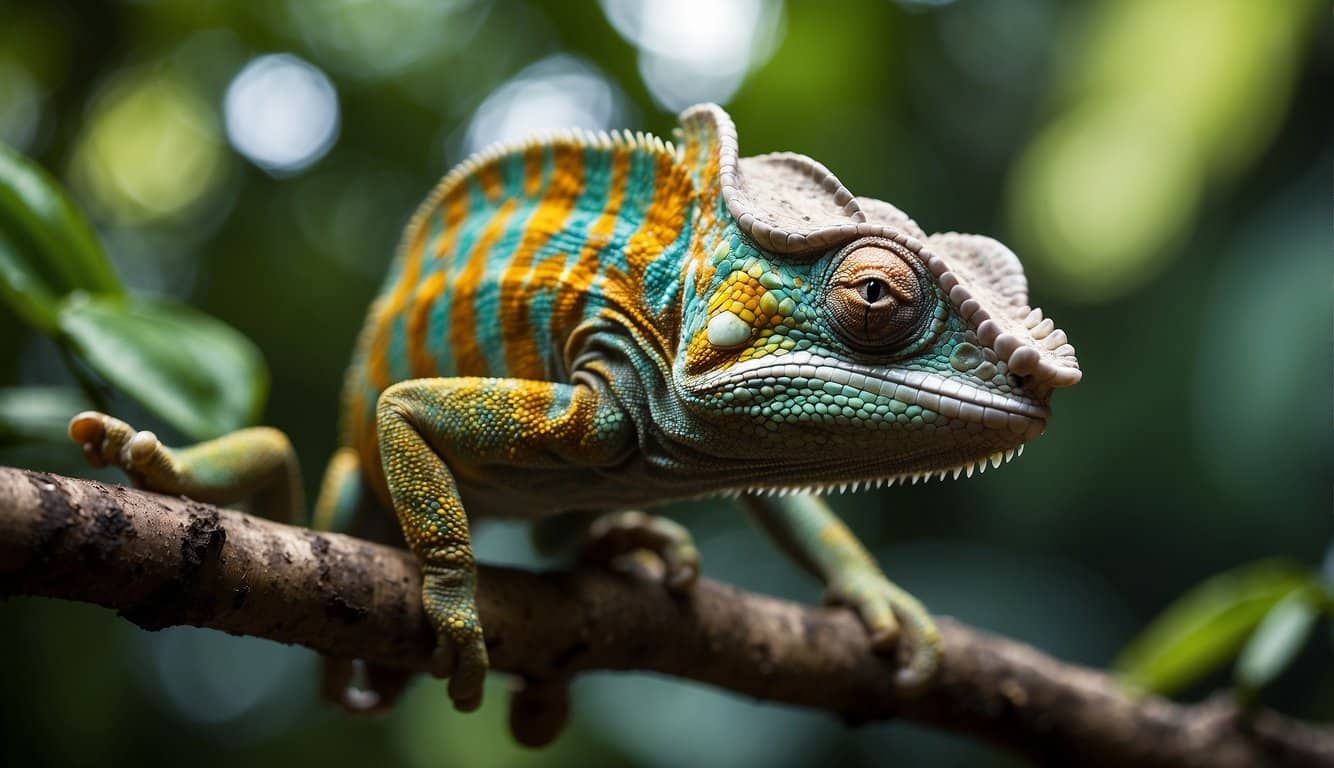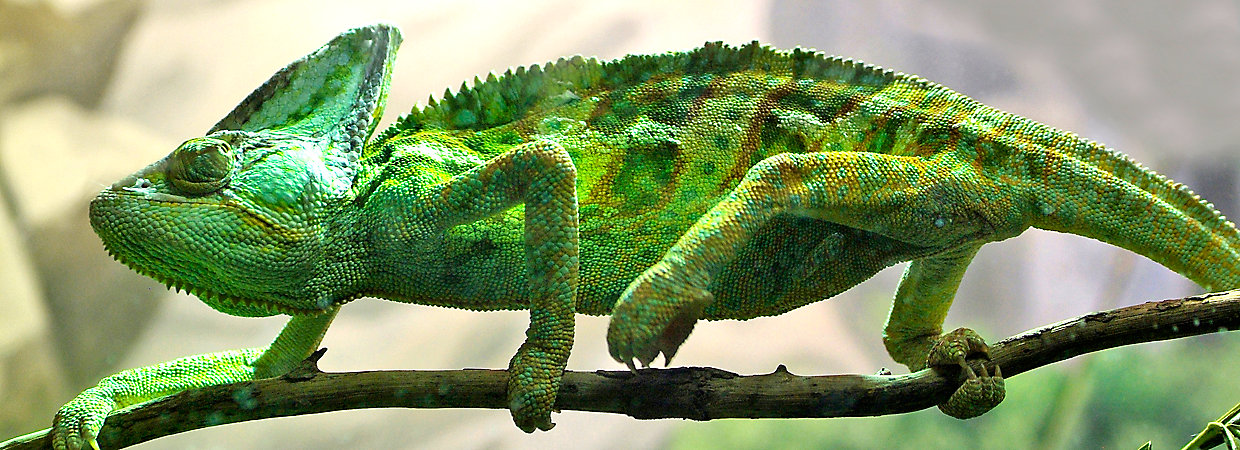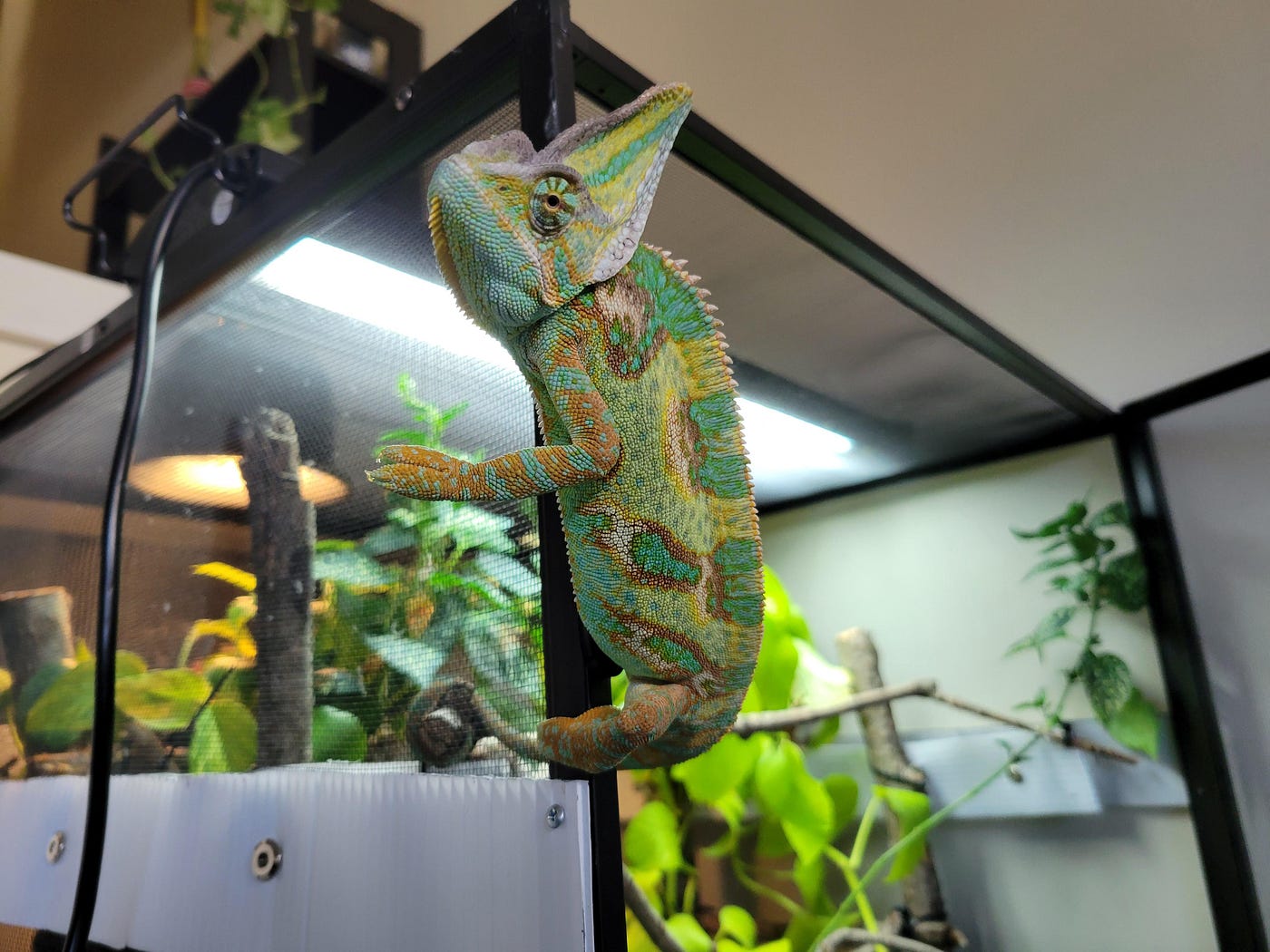Chameleons obtain calcium in the wild mainly through their diet. They consume various insects, which are rich in calcium.
Understanding how chameleons acquire essential nutrients is vital for reptile enthusiasts and biologists alike. These remarkable creatures, known for their ability to change color and their extruded eyes, also need to maintain a proper nutrient balance to stay healthy. In the wild, chameleons rely on a natural diet primarily comprised of insects, such as crickets, roaches, and locusts.
These prey items often feed on calcium-rich plants, which in turn provide the necessary calcium for the chameleons. This form of indirect consumption is crucial for their bone health and overall physiological functions. Captivating the essence of their natural habitat, wild chameleons seamlessly balance their calcium needs through their predatory instincts and choice of prey.
Chameleons’ Calcium Quest
Imagine being a chameleon in the wild, hunting not just for food but for vital nutrients. This is the Chameleons’ Calcium Quest, an essential mission ensuring their bones and health remain strong. How do they manage? Let’s explore the ingenious ways these colorful creatures maintain their calcium levels through their natural diet in their diverse habitats.
Natural Sources Of Calcium
Chameleons don’t have a calcium supplement aisle in the wild. Instead, they rely on natural food items rich in this crucial mineral. Their primary tactic? They consume a variety of insects known to carry good amounts of calcium.
- Crickets
- Mealworms
- Waxworms
Apart from insects, chameleons also lick dew off leaves which can contain traces of calcium. They also chew on plants, which could provide additional nutrients. Wild chameleons have refined their diets to ensure they get what they need.
The Role Of Diet Diversity
Chameleons are picky eaters, and for good reason. A diverse diet prevents nutrient deficiencies. Different insects have various levels of calcium. By eating a mix, chameleons cover their nutritional bases.
| Insect | Calcium Content |
|---|---|
| Crickets | Moderate |
| Mealworms | Low |
| Waxworms | High |
Additionally, some chameleons might consume small vertebrates or snails, which also offer calcium. Through instinct and need, they achieve a balanced diet. Such diet flexibility is key to their survival in varying ecosystems.
Hunting Strategies For Calcium-rich Prey
Chameleons need calcium for strong bones and vibrant colors. In the wild, these skillful hunters have unique strategies to find calcium-rich prey.
Insects And Their Nutritional Value
Insects are a chameleon’s main source of nutrition. They offer proteins and essential minerals like calcium. Chameleons choose specific insects known for their calcium content. These include:
- Crickets: High in protein and calcium
- Mealworms: Rich in necessary fats and some calcium
- Waxworms: Offer a good amount of calcium and fats
These insects provide the calcium chameleons need for health and survival.
Techniques For Capturing Prey
Chameleons use their surroundings and natural abilities to catch these prey. Their methods include:
- Stealth: They blend into their environment, becoming nearly invisible to unsuspecting insects.
- Speed: Chameleons strike with lightning-fast tongues to snatch prey from a distance.
- Patience: They wait for the perfect moment to target their calcium-packed meal.
This hunting prowess ensures chameleons get the nutrients they need to thrive in the wild.
Sunlight And Calcium Metabolism
The mysterious world of chameleons is full of wonders, one of which is how they metabolize calcium in the wild. Chameleons, like other reptiles, need calcium for strong bones, proper muscle function, and overall health. But have you ever wondered how they manage their calcium intake from their natural habitat? Let’s delve into the fascinating process that begins with the role of sunlight in their calcium metabolism.
Synthesis Of Vitamin D3
Chameleons synthesize Vitamin D3 thanks to the sun. They bask in natural sunlight, which triggers a chemical reaction in their skin. This reaction produces Vitamin D3, vital for calcium metabolism. Without Vitamin D3, chameleons cannot effectively use the calcium they consume.
Role Of Uvb In Calcium Absorption
Ever wonder what makes sunlight so special for calcium absorption? It’s all about UVB rays. These invisible rays from the sun are absorbed by chameleon’s skin. They are crucial for transforming vitamin precursors into active Vitamin D3. Only with enough UVB can chameleons properly absorb and utilize calcium from their diet.
- UVB exposure is a must for calcium absorption
- Active Vitamin D3 enhances calcium uptake in gut
| Factor | Role in Calcium Metabolism |
|---|---|
| Sunlight | Starts synthesis of Vitamin D3 in skin |
| UVB Rays | Necessary for active Vitamin D3 production |
With sufficient UVB and active Vitamin D3, chameleons effectively absorb the calcium present in their natural diet. This intricate dance of nature ensures chameleons remain stealthy and strong, thriving in their wild surroundings.
Supplementation From The Environment
Chameleons are fascinating creatures with unique dietary needs. In the wild, they obtain calcium not just from their prey, but also through environmental supplementation. This is vital for their health, especially for bone strength and metabolic functions. Let’s unravel how they achieve this feat naturally.
Mineral Lick Behavior
Chameleons have been observed partaking in what is known as mineral lick behavior. This involves:
- Seeking out natural mineral deposits
- Licking or eating soil and rocks
- Consuming plants with high mineral content
These actions allow them to ingest minerals, including calcium, that are lacking in their primary diet.
Ossification From Natural Elements
Ossification is a process where calcium solidifies in the body, forming bones. Chameleons harness natural elements to facilitate this:
- Sun exposure helps synthesize Vitamin D3
- Vitamin D3 aids in calcium absorption
| Natural Source | Benefit to Chameleons |
|---|---|
| UVB Rays from Sun | Production of Vitamin D3 |
| Water Sources | May contain dissolved minerals |
| Invertebrate Prey | Direct source of calcium |
During basking, the UVB rays chameleons soak up are essential for producing Vitamin D3, which is crucial for metabolizing calcium effectively.
Chameleons’ Lifecycle And Calcium Needs
Understanding how chameleons acquire their essential nutrients in the wild opens a fascinating window into their adaptive behaviors. Calcium is vital for their health, influencing everything from bone structure to reproductive success. Let’s explore the various stages of a chameleon’s life and how calcium needs shift accordingly.
Variations Across Different Life Stages
Chameleons, like many reptiles, have distinct needs at each stage of their lives. These stages include hatchling, juvenile, adult, and breeding periods.
- Hatchlings grow rapidly and need high calcium for bone development.
- Juveniles continue to need calcium to support their growth.
- Adults require a steady calcium supply to maintain bone health and muscle function.
- During the breeding season, females need extra calcium to produce healthy eggs.
Impact On Reproduction
Calcium’s role extends beyond physical growth and enters the realm of chameleon reproduction.
| Life Stage | Calcium Importance |
|---|---|
| Non-breeding Adults | Maintenance of overall health |
| Breeding Females | Crucial for eggshell formation |
Females deficient in calcium may lay eggs with soft shells or experience dystocia. A sufficient calcium intake ensures the production of viable offspring, thus impacting the species’ survival.
Adaptive Evolution For Calcium Intake
The wondrous world of chameleons is not only about vibrant color changes. It’s a tale of survival, where calcium plays a lead role. To thrive in the wild, chameleons have developed unique strategies for calcium consumption. From their menu choices to the way they hunt, their calcium intake is a result of millions of years of evolutionary innovation.
Specialized Feeding Adaptations
Chameleons snatch their prey with remarkable tongue projectiles.
- Particle-packed projectiles: Their tongues can stretch twice their body length.
- Pinpoint accuracy: Chameleons target insects high in calcium.
- Increased intake: Preference for calcium-rich bugs ensures better nutrition.
By fine-tuning their hunting methods, chameleons take in calcium necessary for their health.
Evolutionary Perspective On Diet
From an evolutionary standpoint, chameleons have adapted to their environments by selecting specific diets.
- Sun-soaked insects: They consume bugs that absorb calcium from the sun.
- Leafy consumption: Some chameleon species also eat plants for mineral intake.
These diet preferences emerged over time, guiding chameleons to reliable calcium sources in nature.
Frequently Asked Questions Of How Do Chameleons Get Calcium In The Wild?
Where Do Chameleons Get Calcium In The Wild?
Chameleons in the wild obtain calcium by eating a variety of insects, plants, and occasionally small vertebrates, which naturally contain the mineral.
How Do You Give A Chameleon Calcium?
Provide calcium to chameleons by dusting their feeder insects with calcium powder or offering calcium-rich gut-loaded prey. For UVB light-exposed chameleons, use pure calcium or calcium without D3 supplementation. Use calcium with D3 for those without UVB exposure. Administer calcium two to four times weekly.
Do Chameleons Need Calcium Dust?
Yes, chameleons require calcium dust on their food to maintain healthy bone structure and prevent metabolic bone disease.
What Does A Calcium Deficiency Look Like In Chameleons?
Calcium deficiency in chameleons often presents as weakened bones, stunted growth, and deformed limbs or jaw. Visible symptoms may include lethargy and decreased appetite.
Conclusion
Chameleons have evolved remarkable strategies to maintain their calcium levels. They rely on a diet rich in insects and use the sun’s power to synthesize crucial nutrients. It’s this adaptability that allows them to thrive in a variety of habitats.
By understanding their natural habits, we gain insights into maintaining their health in captivity and appreciating the delicate balance of ecosystems.


